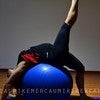Premium Continuing Education workshop
You can view a 2 minute preview. For details, scroll down below the video.
Workshop #2258
Fascia-Focused Pilates
Description
Objectives
- Learn how the different fascial lines are organized in the body and how to keep them balanced
- Learn how to improve and maintain the elasticity in your body
- Learn about the neuromyofascial web and how it is more relevant than the term musculo-skeletal
Once you purchase the workshop, you will have access to the pdf attachment. It will be located underneath the description.
About This Video
Continuing Education Credits
If you complete this workshop, you will earn:
2.5 credits from Pilates Association Australia (PAA)
The Pilates Association Australia (PAA) is an independent and not-for-profit organization established by the Pilates industry as a regulatory body for control of quality instruction, member support, and integrity within all legitimate approaches to the Pilates Method.
3.0 credits from National Pilates Certification Program (NPCP)
The National Pilates Certification Program is accredited by the National Commission for Certifying Agencies (NCCA)
Workshops: Anatomy and Fascia
Comments

You need to be a subscriber to post a comment.
Please Log In or Create an Account to start your free trial.






























